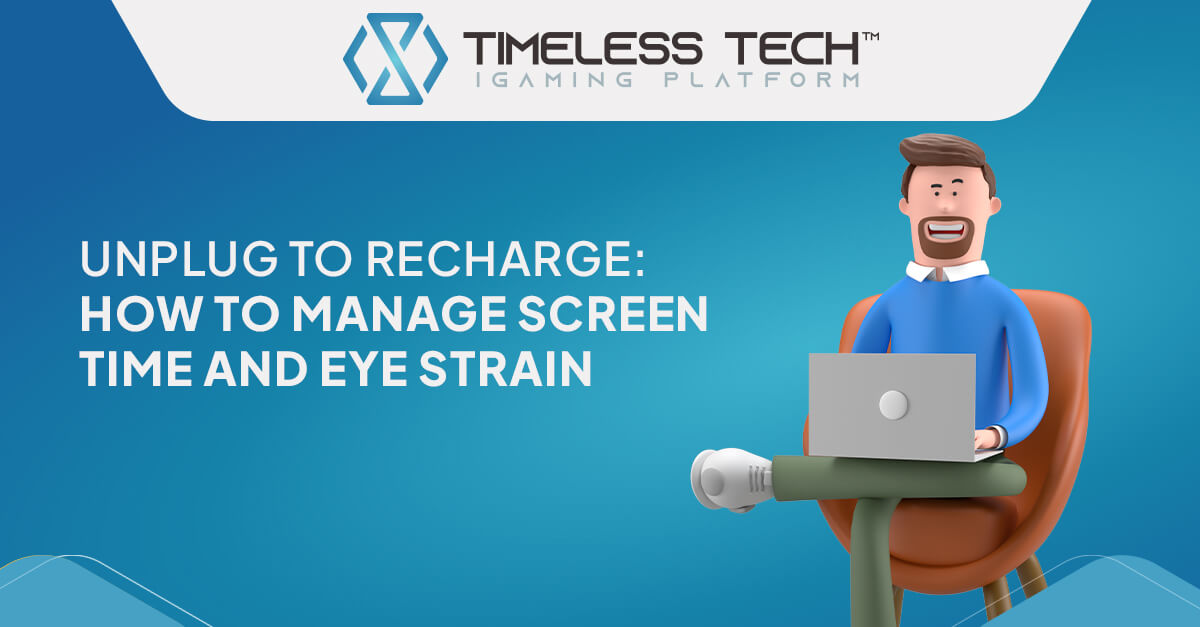Screens are everywhere—desktops, laptops, tablets, smartphones, and even smartwatches. For most office workers, staring at screens for 8+ hours a day has become the norm. But while tech powers productivity, it can also drain your energy, affect your sleep, and strain your eyes.
In this month’s Healthy Lifestyle article, we’re diving into Digital Wellness—the importance of managing screen time, reducing eye strain, and creating habits that support your long-term health and focus.

How Screen Time Affects Your Body and Mind
Extended screen use doesn’t just tire your eyes—it can lead to a full spectrum of symptoms, known as Digital Eye Strain or Computer Vision Syndrome, including:
- Blurred vision and dry eyes
- Headaches and neck/shoulder pain
- Irritability and mental fatigue
- Disrupted sleep cycles and poor mood
Why? Blue light from screens impacts melatonin production (your sleep hormone) and confuses your body’s natural circadian rhythm—especially when exposed in the evening.
Quick Stats on Digital Fatigue
- 50% to 90% of people who use computers daily experience symptoms of digital eye strain
- The average office worker spends over 1,700 hours per year in front of a computer screen
- Exposure to screens 1 hour before bed can reduce melatonin levels by over 20%, delaying sleep onset

Tips to Reduce Screen Fatigue and Reclaim Your Focus
1. Follow the 20-20-20 Rule
Every 20 minutes, look at something 20 feet away for 20 seconds. It helps your eye muscles relax and reduces strain.
2. Adjust Your Screen Settings
- Increase font size to reduce squinting
- Use “night mode” or blue light filters after sunset
- Adjust brightness to match room lighting
3. Fix Your Posture
Screens at the wrong height or angle can strain your neck and shoulders. Try this:
- Keep your monitor at eye level
- Sit upright with feet flat on the floor
- Use a chair with back support
4. Take Regular Digital Breaks
Go for a short walk, stretch, or step outside. Even a few minutes away from the screen can refresh your mind and eyes.

5. Try a Digital Detox
Pick one time of day—like lunch or the hour before bed—to go completely screen-free. Use this time to read, walk, or relax tech-free.
Sleep & Screens: What You Should Know
Avoid screens at least 60 minutes before bedtime
Use blue light-blocking glasses if you work late
Consider using warm-tone lighting in the evenings
Bonus Tools & Apps for Digital Wellness
- f.lux / Night Shift – adjusts screen tone based on time of day
- Stretchly / EyeLeo – reminds you to take breaks
- Forest / Freedom – helps reduce phone and social media use
FAQ: Digital Wellness
Q: Is blue light really harmful?
A: It’s not harmful in small doses, but prolonged exposure—especially at night—can interfere with sleep and eye comfort.
Q: Should I stop using screens entirely?
A: Not at all! The goal is balance. Use tools, breaks, and adjustments to reduce fatigue—not to eliminate screen use.
Q: Do blue light glasses work?
A: They can help some people, especially those working late or with light sensitivity, though results vary.
Q: How often should I rest my eyes?
A: Every 20 minutes, apply the 20-20-20 rule. Take a longer break every 2 hours.
Conclusion
You don’t need to abandon technology to feel better—you just need smarter habits.
Managing screen time protects your vision, helps you sleep better, and keeps you focused during the day.
Try one or two of the tips above and notice how much more energized and clear-headed you feel.
Stay tuned—next month’s Healthy Lifestyle article will explore The Power of Hydration and why water might just be your best productivity booster.

